Li Peng
OpBoost: A Vertical Federated Tree Boosting Framework Based on Order-Preserving Desensitization
Oct 04, 2022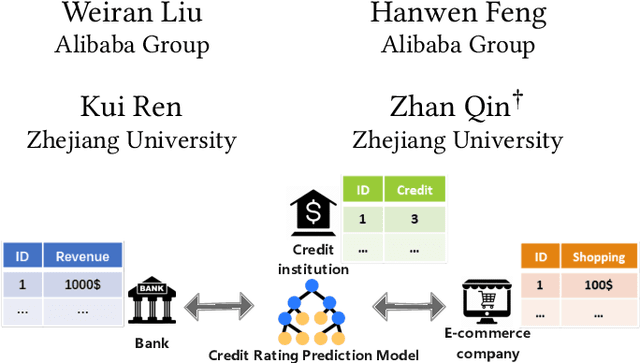
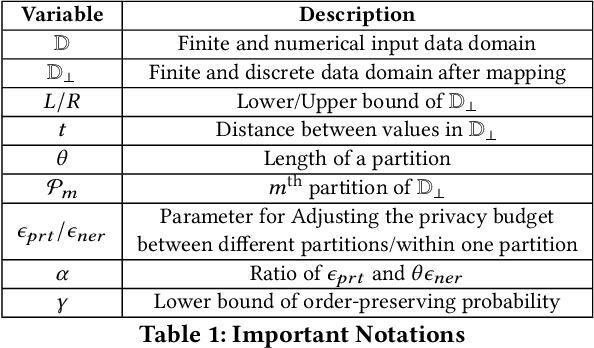

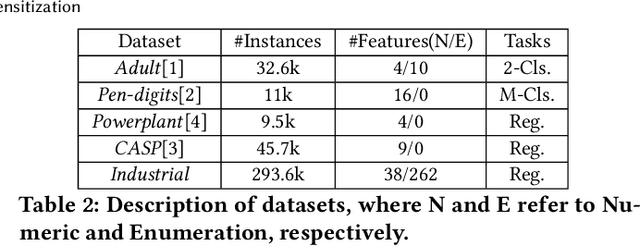
Abstract:Vertical Federated Learning (FL) is a new paradigm that enables users with non-overlapping attributes of the same data samples to jointly train a model without directly sharing the raw data. Nevertheless, recent works show that it's still not sufficient to prevent privacy leakage from the training process or the trained model. This paper focuses on studying the privacy-preserving tree boosting algorithms under the vertical FL. The existing solutions based on cryptography involve heavy computation and communication overhead and are vulnerable to inference attacks. Although the solution based on Local Differential Privacy (LDP) addresses the above problems, it leads to the low accuracy of the trained model. This paper explores to improve the accuracy of the widely deployed tree boosting algorithms satisfying differential privacy under vertical FL. Specifically, we introduce a framework called OpBoost. Three order-preserving desensitization algorithms satisfying a variant of LDP called distance-based LDP (dLDP) are designed to desensitize the training data. In particular, we optimize the dLDP definition and study efficient sampling distributions to further improve the accuracy and efficiency of the proposed algorithms. The proposed algorithms provide a trade-off between the privacy of pairs with large distance and the utility of desensitized values. Comprehensive evaluations show that OpBoost has a better performance on prediction accuracy of trained models compared with existing LDP approaches on reasonable settings. Our code is open source.
Knowledge Squeezed Adversarial Network Compression
Apr 25, 2019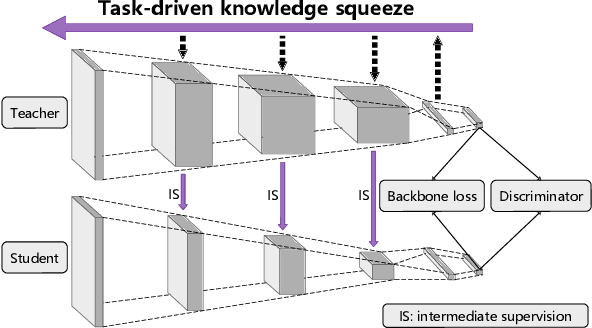

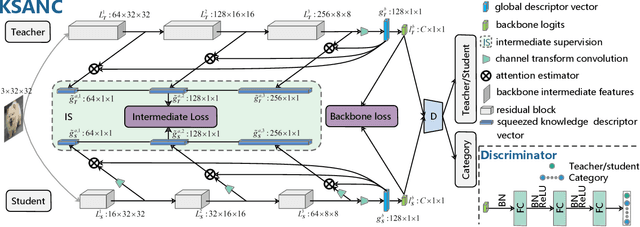

Abstract:Deep network compression has been achieved notable progress via knowledge distillation, where a teacher-student learning manner is adopted by using predetermined loss. Recently, more focuses have been transferred to employ the adversarial training to minimize the discrepancy between distributions of output from two networks. However, they always emphasize on result-oriented learning while neglecting the scheme of process-oriented learning, leading to the loss of rich information contained in the whole network pipeline. Inspired by the assumption that, the small network can not perfectly mimic a large one due to the huge gap of network scale, we propose a knowledge transfer method, involving effective intermediate supervision, under the adversarial training framework to learn the student network. To achieve powerful but highly compact intermediate information representation, the squeezed knowledge is realized by task-driven attention mechanism. Then, the transferred knowledge from teacher network could accommodate the size of student network. As a result, the proposed method integrates merits from both process-oriented and result-oriented learning. Extensive experimental results on three typical benchmark datasets, i.e., CIFAR-10, CIFAR-100, and ImageNet, demonstrate that our method achieves highly superior performances against other state-of-the-art methods.
SECaps: A Sequence Enhanced Capsule Model for Charge Prediction
Oct 10, 2018
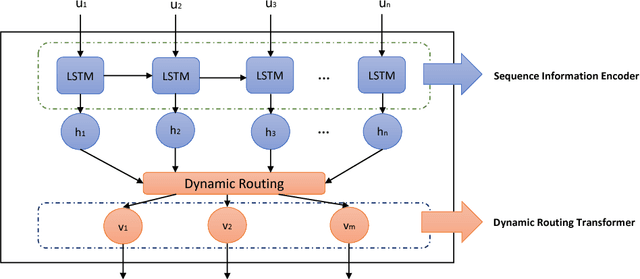

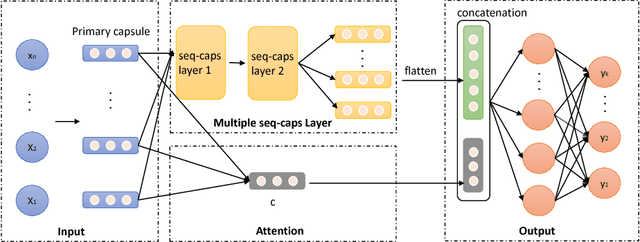
Abstract:Automatic charge prediction aims to predict appropriate final charges according to the fact descriptions for a given criminal case. Automatic charge pre-diction plays an important role in assisting judges and lawyers to improve the effi-ciency of legal decisions, and thus has received much attention. Nevertheless, most existing works on automatic charge prediction perform adequately on those high-frequency charges but are not yet capable of predicting few-shot charges with lim-ited cases. On the other hand, some works have shown the benefits of capsule net-work, which is a powerful technique. This motivates us to propose a Sequence En-hanced Capsule model, dubbed as SECaps model, to relieve this problem. More specifically, we propose a new basic structure, seq-caps layer, to enhance capsule by taking sequence information in to account. In addition, we construct our SE-Caps model by making use of seq-caps layer. Comparing the state-of-the-art meth-ods, our SECaps model achieves 4.5% and 6.4% F1 promotion in two real-world datasets, Criminal-S and Criminal-L, respectively. The experimental results consis-tently demonstrate the superiorities and competitiveness of our proposed model.
 Add to Chrome
Add to Chrome Add to Firefox
Add to Firefox Add to Edge
Add to Edge